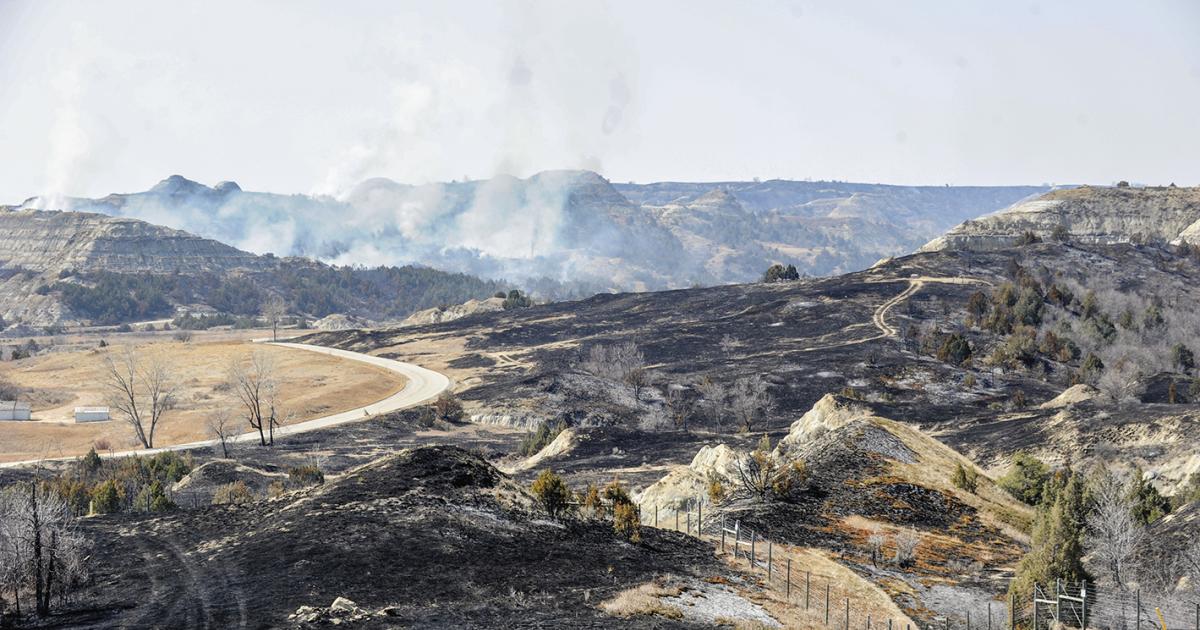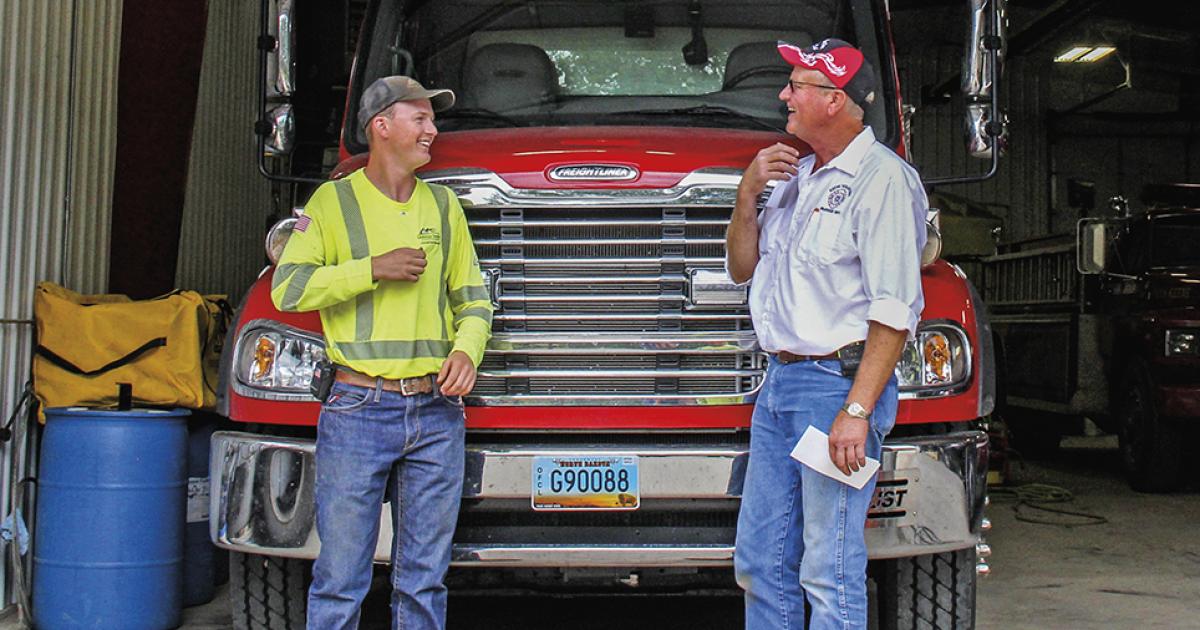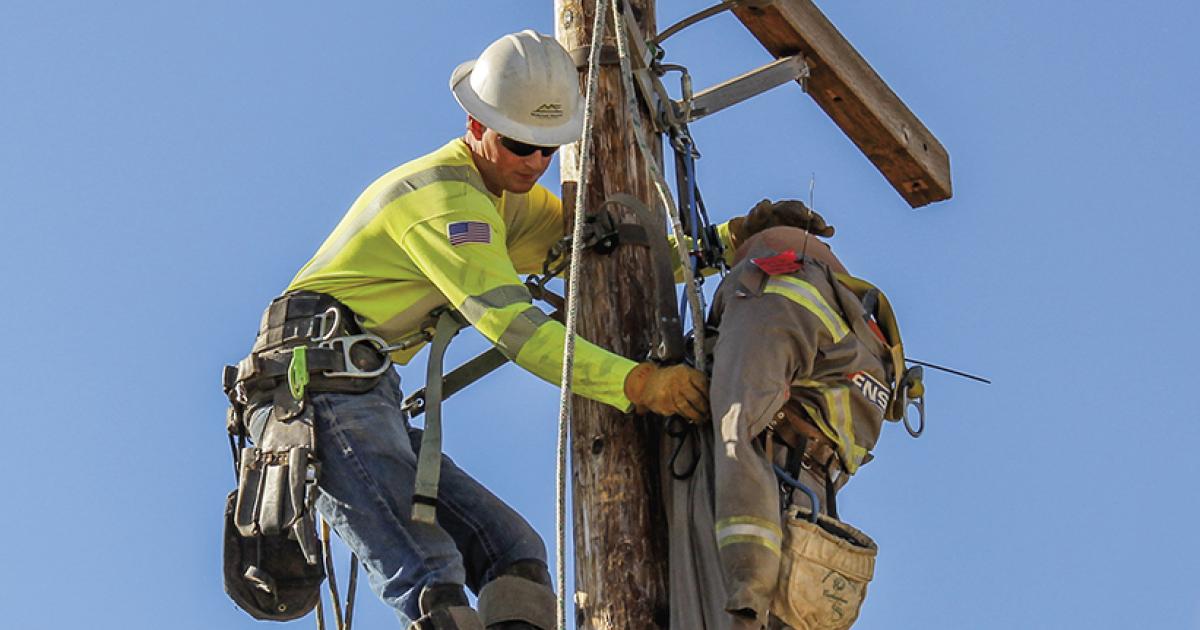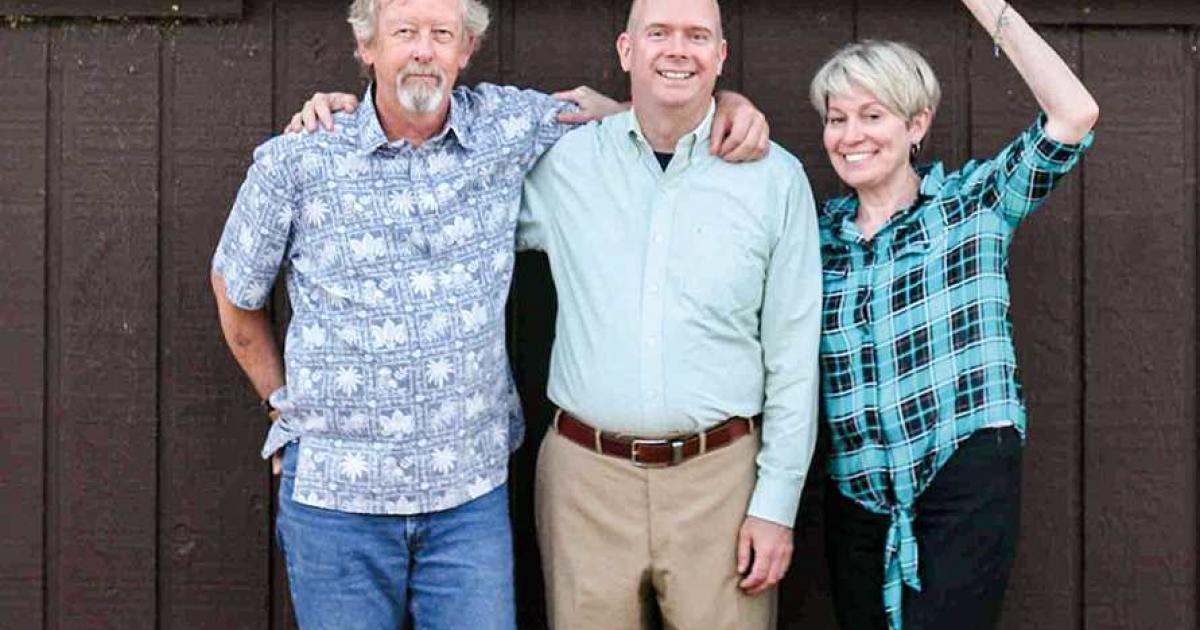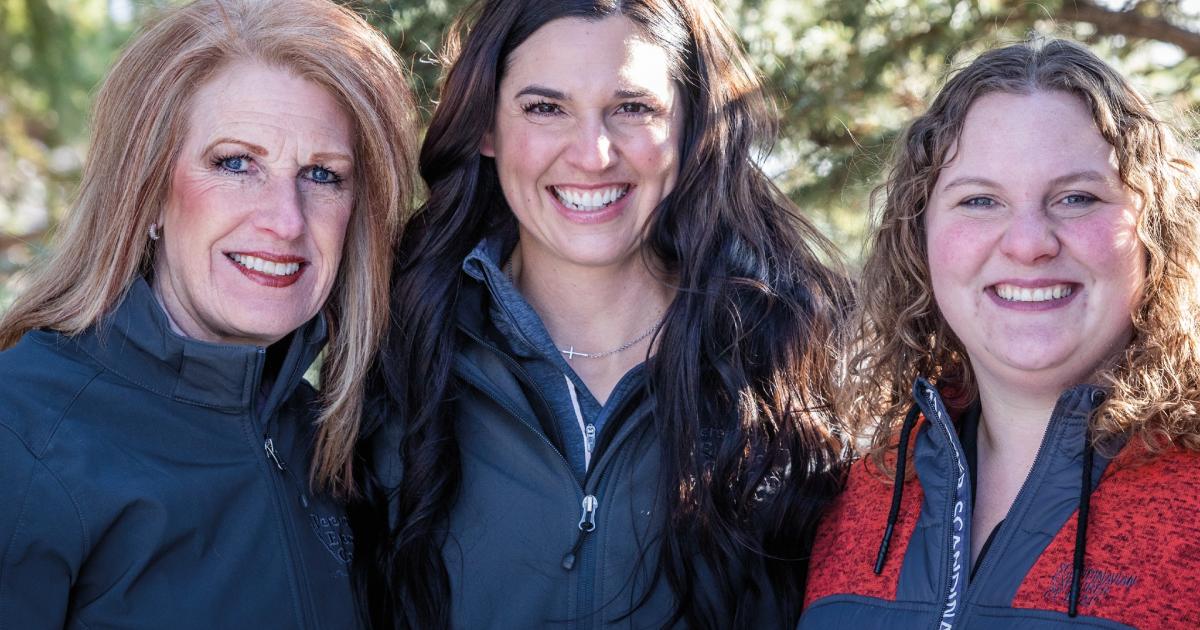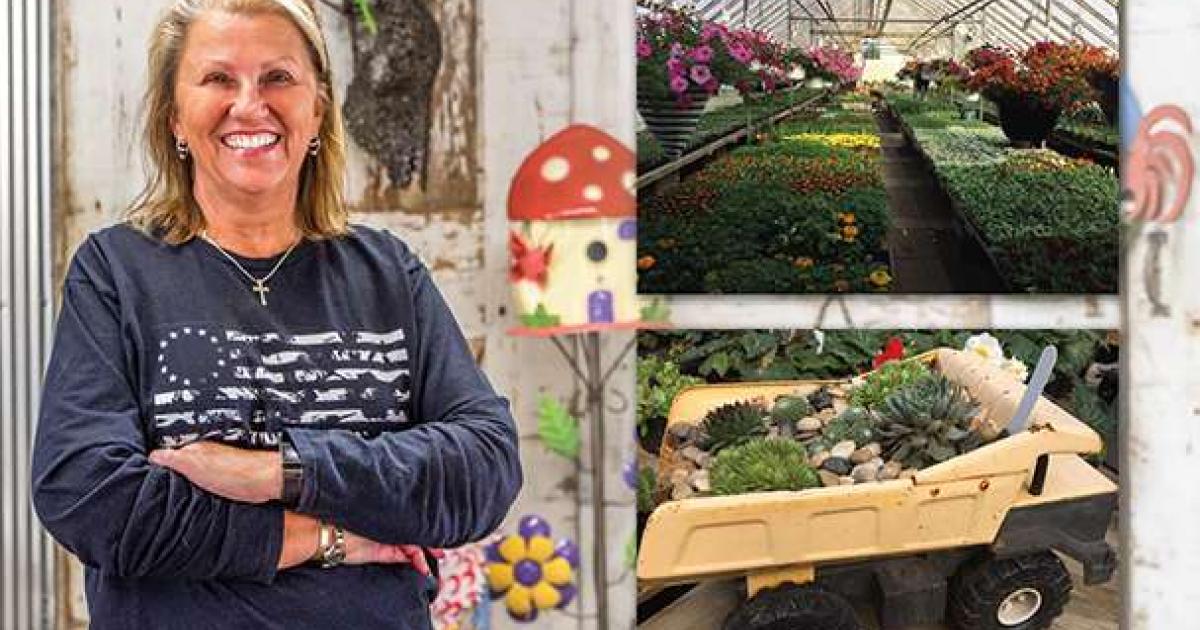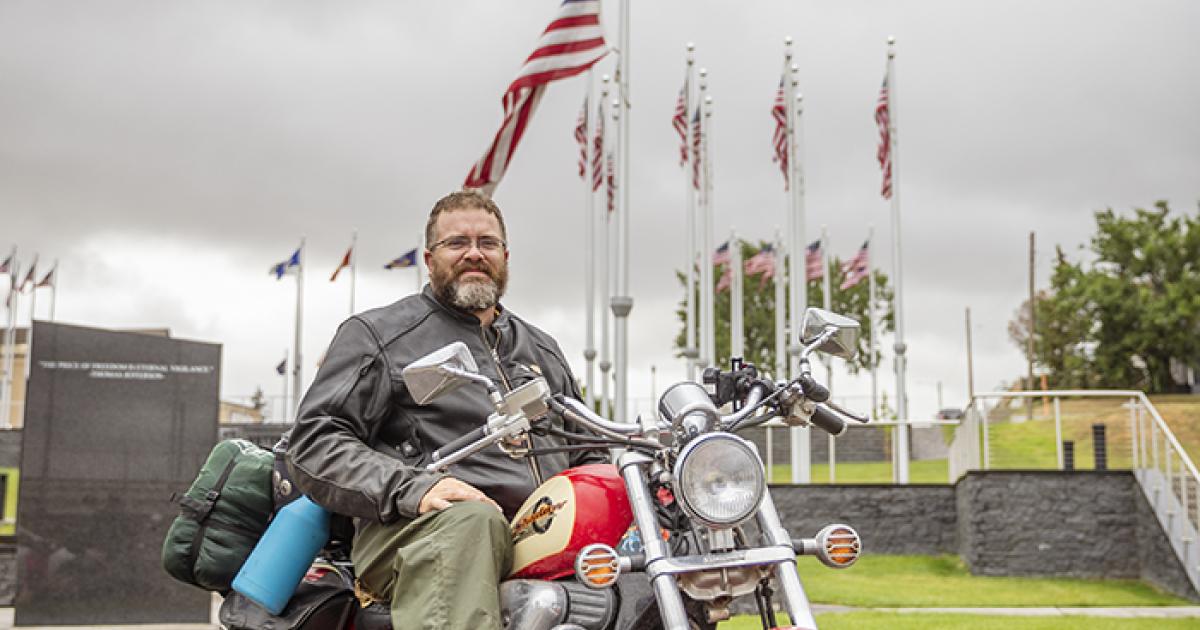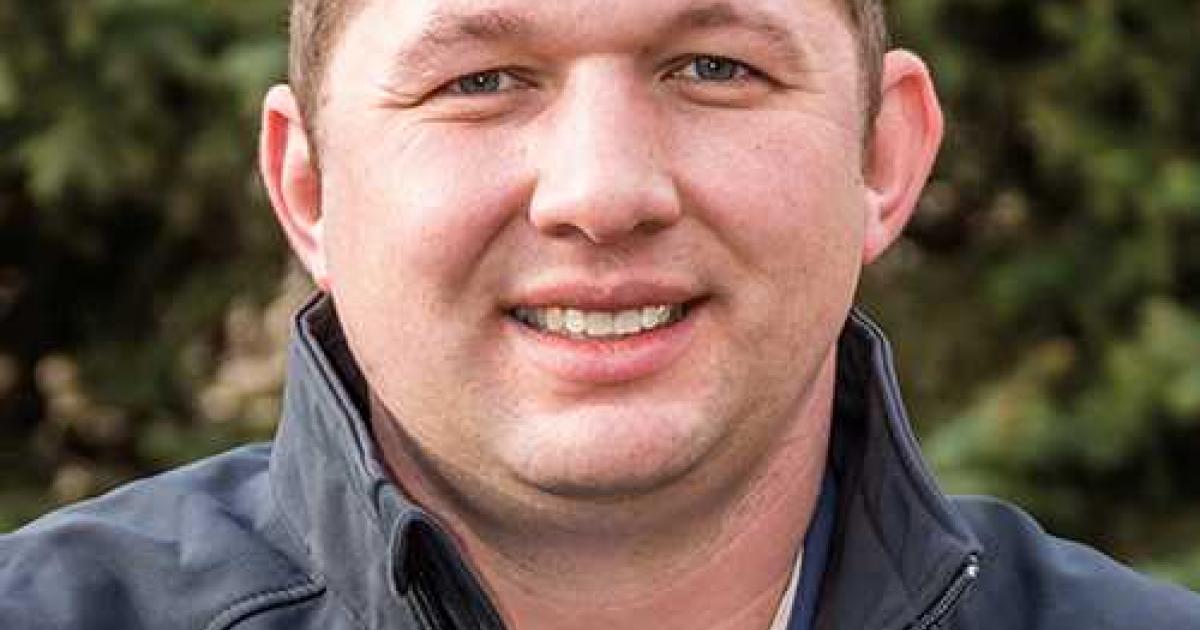Local, state and federal agencies responded in April to the Horse Pasture Fire on the Little Missouri National Grassland, located just north of Theodore Roosevelt National Park – North Unit, that burned 5,000 acres. Extreme drought has exacerbated the fire threat in western North Dakota this year, where McKenzie County is experiencing its fifth driest year in 127 years. PHOTO COURTESY NEAL A. SHIPMAN/MCKENZIE COUNTY FARMER
After watching his father fight fires in western North Dakota during a 20-year firefighting career, Eric Hellandsaas learned a thing or two about serving his community. Today, Hellandsaas balances his responsibilities as a journeyman lineworker for McKenzie Electric Cooperative in Watford City with his community service as both a volunteer firefighter and emergency medical responder (EMR). And in a year of extreme drought, Hellandsaas’ stock has gone up.
According to the U.S. Drought Monitor, McKenzie County is experiencing its fifth driest year in 127 years. In April, firefighters from local, state and federal agencies battled the Horse Pasture Fire on the Little Missouri National Grassland, located just north of Theodore Roosevelt National Park – North Unit, which burned 5,000 acres. Hellandsaas, a member of Keene Volunteer Fire and Rescue, spent a full day at the scene.
“On major fires like the Theodore Roosevelt National Park fire, a lot of people get called for mutual aid. I think there were members from six different departments, not including the air and forest service,” Hellandsaas says. “Since I’ve joined the fire department (in October 2017), this has definitely been the worst year as far as drought and grass fires.”
RURAL FIRE RESPONSE
One of the major challenges of firefighting in western North Dakota is the rural landscape and the sheer geographic distance local emergency services must cover. Keene Volunteer Fire and Rescue, for example, serves an expanse from the Little Missouri River to the Missouri River north of Charlson and near Hellandsaas’ home to the west, 20 miles north of Watford City.
“Being so rural, for me to make it to a firetruck on a fire call in time is nearly impossible,” Hellandsaas says.
That’s why Hellandsaas carries his fire gear in his personal vehicle at all times. The Keene volunteer fire department has also established satellite fire halls, with staged trucks throughout its service territory, which has improved response times.
“Staging these trucks out here has been very beneficial to us,” Hellandsaas says. “We’re able to get the fire under control right away, before it gets too far out of hand and turns out to be a major fire, mitigating the threat to structures, farm equipment and the like.”
With drought exacerbating the fire threat in western North Dakota, Hellandsaas’ pager has been active. While the cause of fires is not always abundantly clear, the department has responded to calls due to lightning and severe weather, farm equipment and powerlines.
If a call comes in involving a fire near electrical infrastructure, having Hellandsaas on the department is a huge asset. Not only is his electric knowledge and safety training as a lineworker helpful, but if the fire threat involves a co-op line, he is able to go directly from the fire department to the co-op. The co-op is then able to send a quick-response crew faster and more efficiently to ensure public and member safety.
And with its commitment to the communities they serve, McKenzie Electric Cooperative also works with its employees, who double as volunteer first responders, to allow staff to respond to emergency calls during work time.
“McKenzie (Electric Cooperative) has been generous enough to allow me to respond to calls, when it makes sense and if I’m in the area,” Hellandsaas says. “It’s definitely been beneficial to the fire department.”
SHOWING UP TO HELP
As a lineworker, part of Hellandsaas’ job involves maintenance and upkeep on powerlines and electrical infrastructure. Electric cooperatives regularly conduct line patrolling, which helps prevent fires and mitigate threats.
“We’ve been doing a lot of line patrolling, looking for cracked insulators, loose hotline clamps or anything that could possibly spark or start a fire,” Hellandsaas says.
This spring, McKenzie Electric Cooperative also bought a pump and firefighting hose and mounted a water tank on a trailer, which line crews pull when responding to calls involving fire threats.
“That’s been another great tool to help us ensure that it’s taken care of for our members,” Hellandsaas says.
Hellandsaas reminds members to call 911 and always stay away from downed power lines, as they could be energized. The danger with grass fires is how quickly they can spread. If the fire burns toward a line or electrical substation, the cooperative needs to be called, so it can shut the power off.
“We have to make it safe for not only the members, but for the fire department to even fight that fire,” Hellandsaas says.
If Hellandsaas has learned one thing through his roles as lineworker, firefighter and EMR, it’s that helping each other is the essence of community.
“It’s amazing how fast the word gets out in the rural district,” he says. “You’d be amazed how many rural people show up with plows and tractors to help.”
Cally Peterson is editor of North Dakota Living. She can be reached at cpeterson@ndarec.com.


